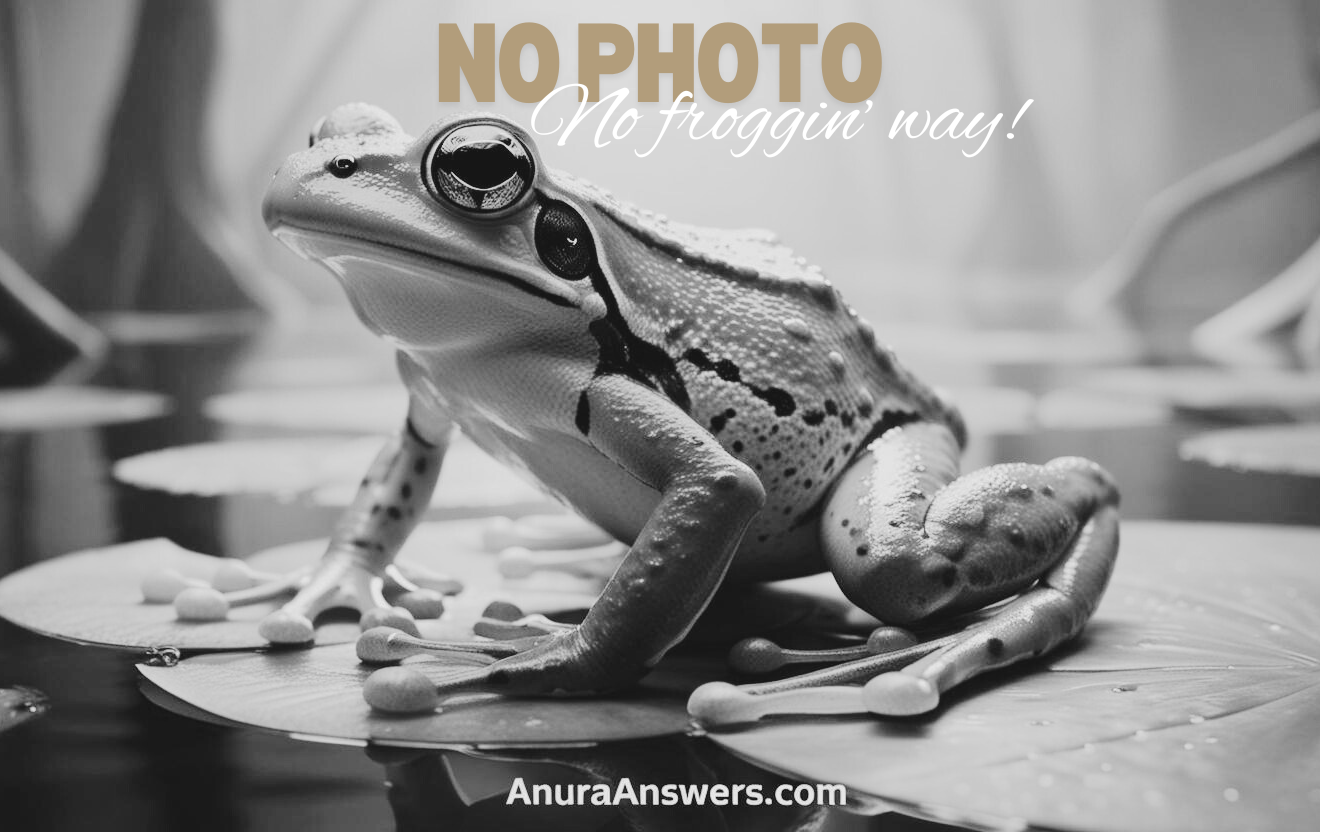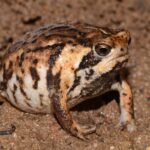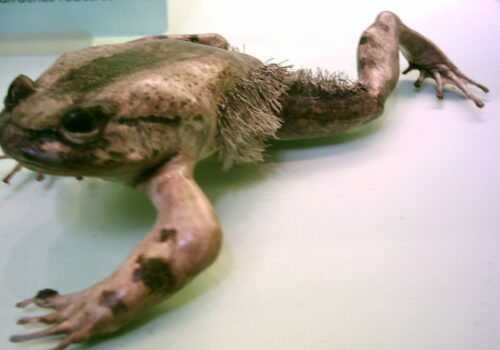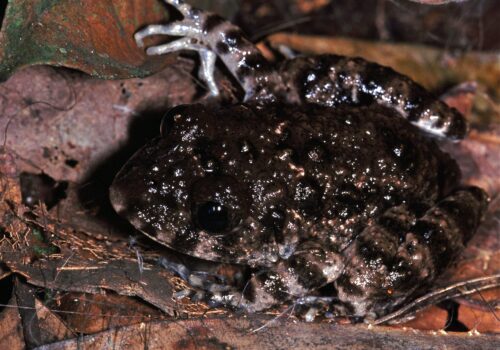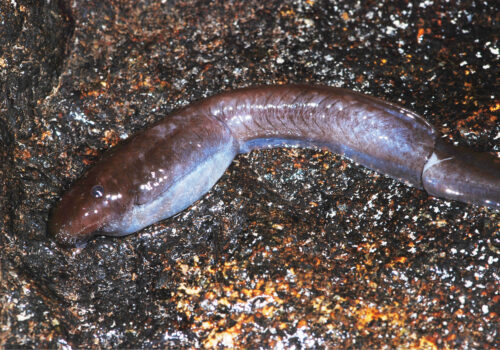Unveiling the Ornate Beauty: The Story of Cardioglossa pulchra, the African Long-fingered Frog#
Hidden under the verdant growth of West African forests, nestled among moisture-rich leaves and humming woodland streams, lives a creature of exquisite beauty and subtle mystery—Cardioglossa pulchra, the African Long-fingered Frog. Its name alone conjures intrigue, translating poetically as “beautiful heart-tongue,” reflecting the delicate markings and patterns that adorn its slender form. Quiet yet enthralling, its existence underscores the complexity and fragility of its finely balanced rainforest habitat. Although petite, this elusive amphibian plays a vital role in its ecosystem and tells a profound story of adaptation and coexistence. Let us journey deep into the lush forests of Central and West Africa and discover the fascinating world of Cardioglossa pulchra.
Taxonomy and Classification#
Cardioglossa pulchra belongs to the family Arthroleptidae, a diverse assemblage of tropical frogs endemic primarily to sub-Saharan Africa. Within this intriguing group, frogs are renowned for their vivid markings, elusive nature, and unusual reproductive behaviors. Cardioglossa, the genus to which our beautiful frog belongs, features species commonly referred to as “long-fingered frogs,” aptly named for their elongated digits essential for their arboreal lifestyles and precise grasping. Their slender fingers are adaptations tailor-made for navigating the slippery vegetation and leaf-litter carpeting the forest floor.
First scientifically described by Boulenger in 1903, Cardioglossa pulchra has intrigued generations of amphibian biologists, underpinning crucial understandings of rainforest amphibian ecology and adaptive diversification. Closely related to other members of its genus, such as the vibrant and similarly secretive Cardioglossa elegans, this species represents just one intriguing branch on the evolutionary tree of African amphibian life.
Natural Habitat#
Cardioglossa pulchra graces lush stretches of equatorial rainforest, primarily found in parts of Cameroon, Equatorial Guinea, Gabon, and possibly extending into parts of the Republic of the Congo. This serene and extraordinarily biodiverse region supports layers upon layers of life, from towering emergent trees sheltering hundreds of bird species to moss-covered trunks and fallen logs teeming with millions of smaller inhabitants.
Deep beneath this shimmering canopy, Cardioglossa pulchra thrives in pockets of moisture, frequenting pristine forest streams and secluded pools beneath dense leaf cover. Humidity-rich microhabitats that rarely see direct sunlight mark their preferred territory. The frog’s delicate skin necessitates these conditions, carefully maintaining hydration through moisture and humidity—crucial to their survival.
Amidst this shadow-dappled ecosystem, this frog is both predator and prey, woven seamlessly into the forest’s complex web. Its habitat choice is not merely a preference but an imperative, as subtle shifts in forest microclimates can pose alarming threats to its populations, highlighting the species’ sensitive nature and significance as an indicator of habitat stability and environmental health.
Physical Characteristics#
Measuring a mere 24 to 31 mm in length, Cardioglossa pulchra is small enough to rest comfortably upon a human fingertip. Yet, within this small stature lies a striking elegance expressed vividly through its patterning and hues. Its flattened body carries a subtle agility perfect for navigating the dense, cluttered rainforest floor, and its elongated digits grant it unparalleled precision as it moves swiftly but silently amidst mosses and leaf litter.
The defining trait of this charming amphibian lies in its striking coloration and intricate patterns. Exquisite dark brown or black markings sprawl delicately across its otherwise pale yellow, cream, or chestnut-toned skin. Lines and blotches create natural mosaics, not merely ornamental but evolved precisely to camouflage seamlessly into the leafy backdrop of its habitat. Only sharp-eyed predators—or patient naturalists—can discern it from the patchwork shadows of the forest.
Its enchanting appearance is an evolutionary masterpiece, developed through millions of years of refinement. True to nature’s delicate balancing act, this coloration is vital for survival, protecting the frog from predators like birds, snakes, and mammals, while also aiding in stealthily approaching its minute insect prey.
Behavior and Life Cycle#
Cardioglossa pulchra exhibits rich and fascinating behaviors, most notably adapted for life in dense rainforests. Crepuscular and nocturnal by nature, this species spends daylight hours concealed beneath leaves, logs, or in crevices lining forest streams. As dusk settles and the jungle chorus swells, they emerge cautiously to begin their nocturnal activities, searching for tiny prey such as insects, beetles, and small arthropods attracted to the damp forest floor.
Mating and Reproduction#
Mating in Cardioglossa pulchra is a gentle and ephemeral affair synchronized with the rainy season, when humid conditions and abundant water sources create ideal breeding opportunities. Males produce delicate yet distinctive neoteric calls, soft rippling notes woven seamlessly into the rainforest symphony. A female’s arrival is cautious and tactile, guided by these subtle acoustic signals.
Once mating is complete, females carefully deposit their clusters of eggs along the mossy banks and leaf-lined edges of shallow waterways. The protective, gelatinous coating shelters these tiny embryos from desiccation, keeping morality low until rainfall grants sufficient water for larval development.
After hatching, tadpoles display remarkable resilience, spending their developmental period sheltered beneath submerged leaves. Metamorphosis occurs rapidly, transforming these delicate swimmers into terrestrial juveniles, ready to navigate the forest habitat independently yet cautiously.
Ecological Role#
Like many amphibians, Cardioglossa pulchra holds intrinsic value as a significant component of rainforest ecosystems. Through voracious insect predation, they play a key role in maintaining balance among smaller invertebrates, thus indirectly benefiting forest plants and larger animals. Likewise, as prey, they supply vital nutrients to larger animals, forming an essential link within the forest food web.
This species also serves as an important biological indicator, sensitive to minute changes in habitat and environmental quality. Shifts in their conservation status, population sizes, or health provide key warnings about their ecosystems’ well-being—making their conservation as critical a reflection of habitat health as it is about protecting an individual species.
Threats and Conservation Status#
The delicate beauty of Cardioglossa pulchra comes accompanied by immense vulnerability. Currently categorized as “Least Concern” on the IUCN Red List, localized populations nonetheless face significant pressures. Deforestation for agriculture, logging concessions, and rising human populations, combined with climate change-induced habitat alterations, present significant threats.
Amphibians worldwide struggle with rapidly multiplying threats, including environmental pollution, invasive species introduction, and emergent diseases such as chytridiomycosis. While Cardioglossa pulchra has thus far persisted, vigilance is key. Conservation actions prioritizing responsible land management, habitat protection, monitoring programs, and increased public awareness are crucial.
Cultural and Scientific Significance#
Though less frequently highlighted within broader cultural contexts than larger charismatic megafauna, local indigenous groups inhabiting these forests intimately understand the value of every creature. In these communities, frogs often symbolize ecological blessings—water presence, bountiful rains, and balanced ecosystems—conveying longstanding cultural respect for such diminutive yet essential creatures.
Scientific inquiry, too, deeply values the presence of Cardioglossa pulchra. Continued research enhances understandings of bioindicator species, adaptive evolution, chemical ecology, and forest ecosystem health. Studies involving their skin secretions also constitute promising fields investigating potentially novel bioactive compounds with applications in medicine or environmental monitoring.
Conclusion: Guardians of a Delicate Balance#
In painting the intricate tapestry of life of the African rainforests, each thread matters, every small participant crucially sending ripples across the ecosystem. Cardioglossa pulchra, the splendidly patterned guardian of leaves and streams, commands quiet admiration. To protect this remarkable frog is to protect a broader ecological world, maintaining biological diversity and reminding us of the profound interconnectedness of all living things.
In championing conservation advocacy, understanding this amphibious jewel’s complexities, and appreciating its careful elegance, we ensure future generations may, too, encounter an enchanting world still filled with these exquisite frogs—each a tiny representation of the jewel-like splendor alive within our rainforests.
